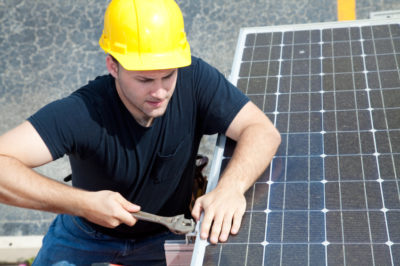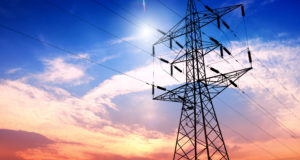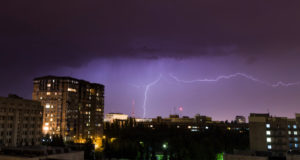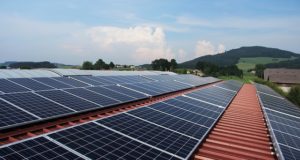|
Listen To The Article
|
America is a land of enquiring minds, and alternative energy is one area that evokes a lot of curiosity. These technologies sound good in theory, but we have been hearing for a long time about “the coming solar revolution” or about how our dependence on fossil fuels will soon be “gone with the wind”… and yet fossil fuels still continue to reign supreme. So people wonder – what is the deal with solar and wind and other such miracle energy technologies? Are they really the best thing to come along since sliced bread, or has all the talk been just hype and hot air?
If you have gone off the grid and chosen to support your new lifestyle with the assistance of a solar energy system, you already know that solar is the real McCoy, so much so that if Walter Brennan were alive today he would no doubt be powering his homestead with a solar photovoltaic array. (If you are too young to understand that reference, please Google it.) But if you have not yet freed yourself from the iron grip of the utility companies, like any good American you probably have quite a few questions about alternative energy, and you are no doubt especially curious about just how good of an option solar energy really is since that is the technology that is getting most of the attention these days.
In this article, we will play the part of the Carnac the Magnificent (another good Google topic for those of you who are too young to remember Johnny Carson) and attempt to ascertain the content of the ten most important questions you have about solar energy before you actually ask them. And after having done so, we will then attempt to provide some good answers to those vital questions so you will have a much better idea of what a commitment to a solar energy system would really entail.
Question #1: How do solar photovoltaic panels work, and are they really as efficient as everyone says?
A solar panel is made from an arrangement of individual solar photovoltaic cells, which are almost always fashioned out of high-quality silicon that has been manufactured to function as a semiconductor. The added elements of boron and phosphorus create electrical conductivity, making it possible for electrons to move across the surface of a photovoltaic cell and feed useful power into the electric circuits of a home. The sun’s radiant energy provides the “juice” that makes this process hum along, and with the help of an inverter that transforms the initial electrical flow from DC to AC, a steady supply of power will be produced for direct usage or for storage in a battery bank (the latter is basically indispensible in a solar energy system that has no grid backup).
Most solar cells currently on the market reach efficiency levels somewhere between 13 and 20 percent, representing essentially the amount of available solar radiation they capture and convert to electricity. This is a statistic that figures to improve dramatically in the coming years, however, as research and development efforts in the field have been heating up faster than an erupting volcano. For example, nano-solar technologies that assemble solar photovoltaic cells molecule by molecule are coming that will make solar energy far more economical and efficient than it is now; but while those current 13 to 20 percent numbers might not sound all that impressive, it must be remembered that the sun provides its energy entirely for free, unlike coal which must be mined, processed, transported, and incinerated before it can do any useful work. So solar photovoltaic technology is already pretty darn efficient all things considered, and the situation is only going to get better in the future.
Question #2: What are solar thermal hot water systems?
Rather than processing and converting solar energy the way photovoltaic systems do, solar thermal set-ups simply collect the sun’s heat as it arrives and use it to heat a supply of water. In some arrangements, collector pipes exposed directly to the sun’s rays heat a steady stream of flowing water as it circulates through them before being emptied into a large-capacity water tank. The flow can be kept going for as long as is required, and such a system is capable of heating a fairly significant amount of water in a short period of time. There are also closed-loop indirect thermal systems that pass the heat collected to a fluid with a low freezing point such as glycol, which in turn transfers that heat via exchange coils to water that is already stored inside tanks.
Because solar thermal relies on a much simpler technological arrangement than solar photovoltaics, it has attracted the attention of many do-it-yourselfers, and there are plenty of good designs available on the Internet for anyone who would like to put together their own solar hot water system from cheap or recycled materials.
Question #3: Can solar energy be used to heat a home?
It sure can. Radiant heating systems are a variation on the solar thermal set-ups just described: solar collector pipes are used to heat a renewable supply of water, which is then pumped through a network of plastic tubes running below the floor of a home, facilitating the transfer of heat into the rooms above. Solar radiant heating systems of this sort are probably not great choices for climates where temperatures stay well below freezing for the majority of the time during the winter (except as a supplement perhaps), but a well-designed system can function up to 40 percent more efficiently than the typical forced air set-up, making it a good “bang for the buck” investment for those residing in milder climates.
Question #4: What are building-integrated photovoltaics and are they a legitimate alternative to photovoltaic panels?
Building integrated photovoltaics are actually built right into the structure of a home, merging with and replacing regular construction materials and features. Windows, roof shingles, and glass walls can all be constructed with power-generating solar cells fully integrated with the supporting structural materials, cutting out the middleman and bringing solar energy generation to a whole new level of streamlined efficiency. Unfortunately, this technology is still largely in its nascent stages, and at the present time it is probably too expensive to be a practical option for most off-the-gridders. (BIPVs only have about a 1 percent market share as of now, and until greater economies of scale are attained, costs are not likely to come down significantly.)
Brand New Way To Generate Your Own Perfect Power…
Question #5: How much space will a solar photovoltaic system require?
One square foot of a solar photovoltaic panel will generally yield about 10 watts of electrical power. This mathematical rule of thumb means that a solar photovoltaic system with a generating capacity of 1 kilowatt (1000 watts) would need 100 square feet of roof or ground space to hold its constituent panels. Since most solar energy systems designed to meet all or most of a home’s energy needs will fall somewhere in the 3-to-6 kilowatt range, in most instances 300 to 600 square feet of available space will be required before an array of photovoltaic panels can be installed.
Regardless of whether an array of solar panels are to be installed on the roof or on the ground, it is important that they be kept in the sunlight at all times. If only one bottom row of a solar panel is in the shade it can reduce the efficiency of that panel by up to 80 percent, so any space chosen will need to be obstacle- and tree-free around its perimeter.
Question #6: Assuming I can’t save enough money to cover all the costs of a solar energy system, are there financing programs and/or tax breaks available to help me out?
Are there ever! Think what you want about the government, but they are extremely bullish on alternative energy, and if you want to install a solar energy system on your property, there are all kinds of credit and finance programs available to help you out. Energy-efficiency mortgage loans can be taken out that will fund alternative energy installation costs, and there are 8 different federal government agencies that offer such loans to members of the general public: Fannie Mae, Freddie Mac, the Department of Energy, the Environmental Protection Agency, the Department of Agriculture, the Department of Housing and Urban Development, the Small Business Administration, and the Department of Veterans Affairs.
In addition to these loan programs, all of which can be used to pay for solar photovoltaic or solar thermal systems in their entirety, there are numerous tax credits available at the federal, state, and local levels that can help offset the costs of any home improvement project that boosts energy efficiency and reduces dependence on the power grid. In total, these credits could cut overall costs for the installation of a home solar energy system by as much as one-third, so they are obviously nothing to sneeze at.
Question #7: Will permits be required if I decide to install a solar energy array?
Yes, a building permit will be needed if you plan to install either a solar photovoltaic or solar thermal system. You will also have to make sure everything you put in meets all building and electrical codes and that your system adheres to the standards for solar electric building set forth in Article 690 of the National Electric Code (NEC). Fortunately the regulating bureaucracies are all quite receptive to solar energy, so obtaining full approval should be little more than a formality. If you hire a professional installer to put in your system, he will likely include the costs of permits in his bid, so you won’t have to spend any extra time worrying about it.
What It Takes To Create A Safe, Self-Sufficient, Off-The-Grid Lifestyle Using Solar Power!
Question #8: Do solar energy systems need a lot of maintenance?
Practically none. Solar energy is the quintessential low-maintenance technology; outside of the occasional cleaning with soap and water, neither solar photovoltaic panels nor solar thermal collector coils will require much attention at all. If any debris should fall on them following strong winds or a storm, it should naturally be removed, but because these systems are made of durable materials and don’t have moving parts, they can usually continue operating for 30 or 40 years with very little trouble.
DC-to-AC inverters will probably need to be replaced every 10 years or so, however, and the lifespan of the average battery in a solar energy battery bank will run somewhere between 5 and 10 years.
Question #9: I’ve been hearing a lot about solar leasing – could this be an option for me?
Because so many people were interested in solar energy but unable to afford it, a few years ago a solar power company called SolarCity came up with a brilliant idea: why not offer home owners the option of leasing a solar photovoltaic system, so they can reap the benefits of the technology without being forced to pay for the whole thing right up front. Once SolarCity began offering solar panels for lease they were swamped with customers, and two other solar companies – Sungerity and SunRun – have now entered the picture and are also allowing customers to lease systems in return for monthly payments.
There are two types of third-party financing alternatives available for interested parties, power purchase agreements and conventional solar leases. Under the terms of a PPA, the installer will put in a photovoltaic system at no cost and then charge its customer a fixed rate for the amount of electricity provided each month, similar to what happens with a regular utility company – except PPA rates are generally lower than those charged by a utility (there would really be no point to the arrangement otherwise). At the end of a PPA contract, the customer will have the option of extending the contract, terminating the relationship with the installer, or actually buying the system and keeping it in place.
Conventional solar leases require a contract for a predetermined length of time – usually 10 to 15 years – and essentially give the property owner the right to use the solar energy system as if it were his own. Purchase options will be available at the end of the lease term, either at market value or below market value depending on how much interest was paid by the customer over the term of the contract (lease terms for a solar energy system are very similar to payback terms for a bank loan).
If you are an off-the-gridder, leasing is not the way to go, because unless you choose to buy your solar energy system at the end of the lease term, it will never actually belong to you. And if you are preparing for the impending collapse of the grid, how can you be sure that it won’t happen before you actually have the chance to take over ownership of your photovoltaic array? Remember, you will have to pay higher interest rates if you expect to get that array for below-market value at the end of your lease term, so taking out an energy-efficiency loan with a government agency and paying it back under friendlier terms seems like a better bet. And with this option you will of course own the system outright, so you will be able to take advantage of any tax credits that are available, which normally remain with the installer under a lease arrangement.
Question #10: Bottom line: how much will a solar photovoltaic system cost me and how long will it take for it to pay for itself through energy cost savings?
If you are going to be purchasing a solar energy system large enough to meet all of your energy needs, you will probably have to invest somewhere between $15,000 and $30,000 when all is said and done – and that is with your 30 percent federal tax credit and all possible state tax credits and rebates factored in. That is a lot, but if you own your home, energy-efficient mortgage programs will give you a way to pay for it, and if you go down this road, favorable interest rates are available in most every case (the government really does like solar energy).
Your energy savings when you go solar will be substantial, especially if you use it to cover 100 percent of your electricity needs. Over the course of 15 to 25 years you should be able to save enough in reduced energy costs to offset the price of your original investment, which is not bad if you are in it for the long haul. But if you are an off-the-gridder, the freedom and energy independence you attain when you go solar is priceless, and that is something you shouldn’t forget about when you are deciding whether or not you can really afford a solar photovoltaic energy system.
 Off The Grid News Better Ideas For Off The Grid Living
Off The Grid News Better Ideas For Off The Grid Living





